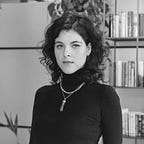Challenge 3: Usability Evaluation and Site Redesign
Challenge
The main goal of this project is to find the pain points in a travel-planning app. In addition, I was supposed to propose changes in the design, which would improve the user experience within this application, adjusting to its user’s needs and goals.
User type + scenario
My target audience is a traveling couple between 20–40 y.o. I created a “couple-persona” for this audience: Ali and Leo. They live in Berlin and decide to go on a romantic trip next summer to Rome and visit the coliseum. They saved enough money for the tickets but still are searching for the best deal once they want to enjoy and celebrate special moments together.
2. Research: The place.
Specifics of the destination:
The Colosseum, also known as the Flavian Amphitheatre, is an oval amphitheater in the center of the city of Rome, Italy. Built of travertine limestone, tuff, and brick-faced concrete, it was the largest amphitheater ever built at the time and held 50,000 to 80,000 spectators.
Nearest airport / most convenient airport to the destination:
The nearest airport to Rome is Rome Ciampino (CIA) Airport which is 13.6 km away. Other nearby airports include Rome (FCO) (23.9 km), Pescara (PSR) (150.8 km), Naples (NAP) (187.2 km), and Florence (FLR) (236.4 km).
Currency and exchange from your own currency:
its euro, My users live in Berlin and Rome is relatively more expensive for eating out, leisure, hotels, etc.
Medical needs: vaccination, visa, etc:
Warning – Level 3, COVID-19 risk in Italy is high
Wardrobe recommendations:
- Good walking shoes
- Summer Jacket
- Camera to register beautiful moments together
- backpack to save water, umbrella, jackets, camera, etc
- Umbrella in case it rains
Days needed to visit attraction.
1 day is enough.
3. Benchmarking
Usability Heuristics evaluation with Nielsen’s Principles.
4. Testing
After conducting Usability Heuristics evaluation with Nielsen’s Principles, I decided to test Skyscanner. This app compares flights from different companies and gives my audience the best ticket deal once they want to have fun in Italy enjoy good moments without worrying about finances.
All my users are already using Skyscanner mobile app. Half use the Android version and the others the IOS one. I performed the test on my iPhone once both versions have UI and UX differences.
Building Scenarios
To start with usability testing, I had to come up with a realistic scenario, explaining to my interviewees that they were planning a romantic trip. I choose 4 users that were compatible with my couple personas and user type and asked them to do the following tasks in Skyscanner.
Look and feel:
Qualitative Research. The 5 second- Testing
After this, I asked my users to perform the following tasks with the App:
- Find a flight that suits you and your needs.
- Use filters to personalize your travel.
- Save the flight that you chose and share the flight with your Partner
Insights:
- My users are tech-savvy and want to speed up their interaction when purchasing tickets. They didn't like to have to go through to many confirmations in the process of filtering the search of a flight.
- Some buttons are just presented in the same way in the filters process
- Users don't select the days of travel because they want to select them after knowing each day has the best ticket deal.
- Two people had difficulties to visualize saving and sharing the flight.
- The android users were extremely critical of the fact the iOS version has no map on it. They like to check how is the corona situation before booking a flight to not lose money and time.
Solution and Redesign:
Search: The original screen in the middle has an icon with a globe that when clicking brings the user to an external link that shows a map informing the corona and travel restrictions.
